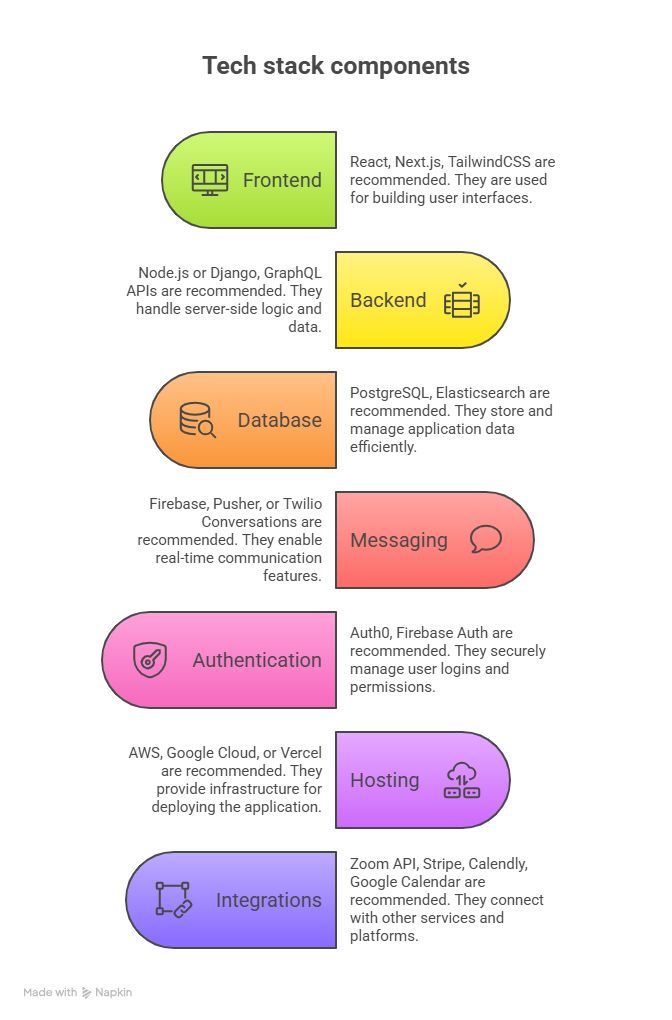Let’s face it — LinkedIn has become the virtual office corridor no one asked for. You drop by for networking but leave buried in sales pitches, vague “hustle posts,” and endorsement requests from that guy you met once at a coffee meetup three years ago. It’s professional… but also clunky, dated, and kind of joyless.
Meanwhile, professionals are craving more. Creators want space to monetize niche expertise. Freelancers need tools that actually help them land gigs. Remote teams want hybrid communities. And job seekers? They’d prefer less noise and more signal. The professional social space is due for disruption.
If you’ve ever thought about building a smart, focused alternative to LinkedIn — whether for a specific industry, region, or type of talent — the time is now. In this blog, we’ll dive into how to build a LinkedIn clone alternative that users will actually like. And yes, Miracuves can help bring your vision to life.
Why Build a LinkedIn Alternative?
Professionals Are Tired of the Noise
LinkedIn’s feed is increasingly cluttered with content that feels forced or overly polished. Many users are disengaging from the platform entirely, especially younger professionals and remote-first workers who prefer authenticity over branding.
One Size Doesn’t Fit All
A tech startup founder in Berlin doesn’t want the same networking platform as a construction project manager in Mumbai. A UX freelancer in Tokyo may need an entirely different flow from a recruiter in Chicago. LinkedIn’s one-size-fits-all model is ripe for replacement.
Creator Economy Meets Careers
Industry influencers, educators, and consultants want tools to monetize their know-how — whether through gated content, live webinars, or mentorship. A professional platform that blends credibility with commerce could be game-changing.
Key Features Your LinkedIn Clone Should Offer
Custom Profiles with Depth
Forget résumé templates. Let users design profiles that reflect their real professional identity. This might include:
- Portfolios or project galleries
- Video bios or pitch reels
- Skills endorsements with evidence
- Availability calendars or consultation links
Smarter Networking Tools
Ditch the generic “connect” button. Instead, offer:
- Interest-based connection suggestions
- Intro request workflows (via mutuals or AI)
- Real-time networking rooms for industries
- Group chats with built-in scheduling
Focused Feeds
LinkedIn’s timeline feels like a corporate echo chamber. Your alternative can offer feeds tailored to:
- Job opportunities in the user’s field
- Niche industry discussions
- Learning content or events
- Company updates relevant to user interests
Verified Talent and Job Matching
Include real-time matching features with layers of trust:
- Skills-based job suggestions
- Employer reviews and culture ratings
- Anonymous Q&A with hiring teams
- Video-based assessments or intro pitches
Content Monetization
Help knowledge professionals get paid for what they know:
- Live webinars or Q&A sessions
- Subscription-based knowledge hubs
- Pay-per-download templates or reports
- Tip jars or sponsor integrations
Ideal Tech Stack for a LinkedIn Alternative

| Layer | Recommended Stack |
| Frontend | React, Next.js, TailwindCSS |
| Backend | Node.js or Django, GraphQL APIs |
| Database | PostgreSQL, Elasticsearch |
| Messaging | Firebase, Pusher, or Twilio Conversations |
| Authentication | Auth0, Firebase Auth |
| Hosting | AWS, Google Cloud, or Vercel |
| Integrations | Zoom API, Stripe, Calendly, Google Calendar |
Niche Targeting: Your Secret Weapon
Rather than “compete with LinkedIn,” build a LinkedIn alternative for someone. Some examples:
- Healthcare professionals
- Independent consultants and coaches
- University alumni networks
- Creative freelancers and studios
- Remote-only startup talent
Hyper-focusing allows you to build custom tools and community layers LinkedIn could never prioritize.
Go-to-Market Strategy
Build With a Community
Start with a small, passionate group. Build in public. Let your early adopters shape the features, culture, and tone.
Offer Early Monetization
Let early users monetize their knowledge or gain visibility. Give them tools to showcase skills and book clients.
Get Out of the Corporate Vibe
Modern professionals are tired of corporate jargon. Build a culture of real talk, transparency, and authenticity.
Stat Source: CB Insights – Professional Social Platforms Trends
Mistakes to Avoid
- Copying LinkedIn Too Closely: Innovate. Don’t replicate its clunky UX.
- Overengineering: Start with profiles, connections, messaging, and jobs. Add learning or monetization later.
- Ignoring Trust Layers: Fraud is real. Include verification, review systems, and user controls from day one.
- Neglecting Global Talent: Think multi-language support, localized job boards, and flexible time zones.
Conclusion: Time to Redefine Professional Networking
LinkedIn may dominate the space, but it doesn’t serve everyone — and it certainly doesn’t inspire everyone. The next wave of professional platforms will be niche, dynamic, and creator-friendly. Whether you’re building a hub for devs, designers, or drone pilots — there’s space for innovation.
At Miracuves, we help innovators launch high-performance app clones that are fast, scalable, and monetization-ready. Ready to turn your idea into reality? Let’s build together.
FAQs
Still have questions about building a LinkedIn alternative? Let’s clear them up.
Is it legal to build a LinkedIn alternative?
Yes, provided you build your own platform from scratch and don’t infringe on trademarks or patents.
What kind of budget do I need?
Expect an MVP to range from $25,000 to $70,000 based on features. Miracuves offers scalable development packages.
What’s the best tech stack for a professional network?
A mix of React frontend, Node.js backend, PostgreSQL, and third-party tools like Firebase or Pusher works well.
Can I build this for a specific industry?
Absolutely — niche networks for healthcare, education, startups, or design professionals are in high demand.
What features should I prioritize?
Start with dynamic profiles, job matching, secure messaging, and event integrations.
How do I attract users to switch?
Offer better UX, actual job results, and monetization tools. Plus, a community vibe they can’t get on LinkedIn.
Curious about consumer-facing clones? Check out our Facebook Clone App Development guide.







